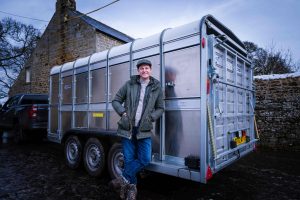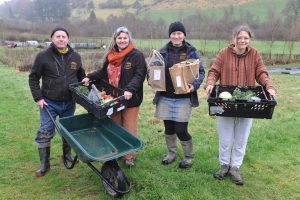
THE FARMERS’ UNION OF WALES has repeated its long standing call for a science led policy to control TB in wildlife after the Welsh Government suggested the abandoned badger vaccination pilot in north Pembrokeshire could restart in 2017.
Ministerial advice provided to the Welsh Government in 2012 suggested vaccination in the north Pembrokeshire Intensive Action Area (IAA) could cost Welsh farmers and the taxpayer an additional £3.5m compared with a badger cull.
“The results after four years of badger vaccination in the IAA appear to support the original assessment that vaccination would cost farmers and the taxpayers millions and save the lives of far fewer cattle than badger culling would have done,” said FUW Deputy President and north Pembrokeshire farmer Brian Thomas.
“Based upon trials in other areas, we could have expected a thirty or forty percent reduction in cattle herd TB incidences by now, had the original plan to cull badgers gone ahead. Instead, matters in the area are no different to other comparable areas where badger vaccination has not taken place.”
Mr Thomas was speaking after attending a Welsh Government briefing session where the results of Animal and Plant Health Agency (APHA) modelling of badger vaccination strategies were presented.
“A key focus of the modelling work carried out and the subsequent statement made by Welsh Government indicates a possible return to badger vaccination in 2017. In our view that would mean returning to a pointless and costly exercise which has yet to show any positive impacts, whereas badger culling as originally planned would already have resulted in significant reductions in TB incidences.”
Mr Thomas said there was also no guarantee that the BCG vaccine used on badgers would be available by 2017.
“There is currently a global shortage of BCG vaccine, and given that one badger dose can vaccinate twenty infants in regions where human TB is a huge problem, such as Africa, it would be immoral to deplete global vaccine stocks by vaccinating badgers.”
The average cost of vaccinating each badger caught in the north Pembrokeshire Intensive Action Area has been around £700.
“In the 12 months to the end of September 2015 the number of cattle culled in Wales due to TB was 7,380, an increase of 25 percent on the equivalent period to September 2014.
“That’s an equivalent to 20 cattle culled every day of the week.”
Mr Thomas said farmers were doing their part in terms of controlling the disease, and accepted that cattle which represent a risk need to be destroyed.
“Welsh Ministers need to recognise that other animals which represent a risk should also be controlled, and that to avoid the issue by spending millions on vaccinating badgers will simply make matters worse in the long run.”
Mr Thomas’s words appear to have added force following the announcement by the Welsh Government that the effectiveness and integrity of the vaccination scheme would be unaffected by its suspension for the fifth year of its five-year duration.
Following the decision to suspend sourcing the vaccine due to a global shortage, the Animal and Plant Health Agency (APHA) was commissioned to identify the likely impact the non-availability of Badger-BCG in 2016 would have on the vaccination project within the Intensive Action Area (IAA) in West Wales.
The report concludes that despite not being able to complete the fifth and final year, four years of badger vaccination would achieve a reduction in prevalence of TB in badgers in the IAA. APHA modelling showed that vaccinating for four years, missing year five, and returning to vaccinate in year six is not different from vaccinating for five consecutive years.
The Deputy Minister said: “I am grateful to APHA for completing the modelling work so swiftly and to landowners within the IAA for their continued co-operation.
“The modelling APHA carried out suggests that a gap of one year after year four is no different from vaccinating repeatedly for 5 years.
“We will continue to engage with the agriculture industry, wider rural communities, veterinary profession, Eradication Boards, and the Industry Advisory Group in the Intensive Action Area.
“We will also continue to evaluate the impact of all interventions within the IAA, including vaccination, cattle surveillance and controls and the enhanced biosecurity measures.”

















Add Comment